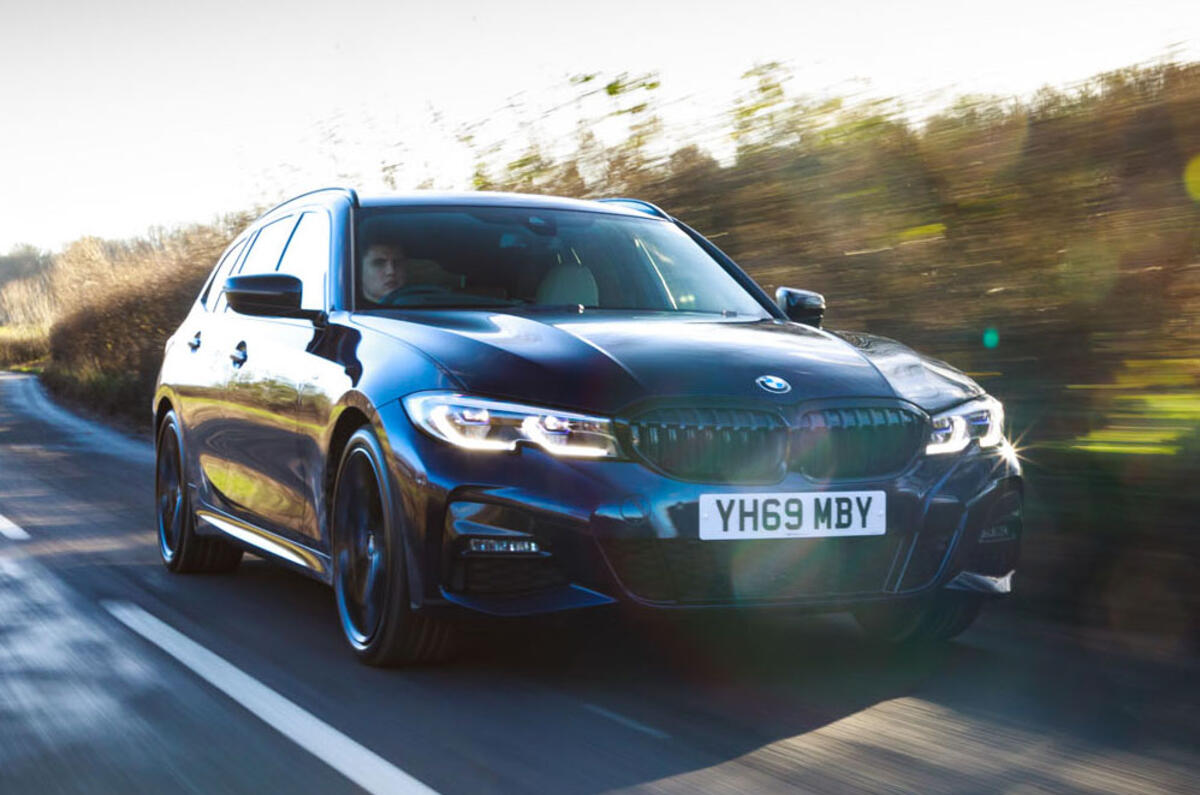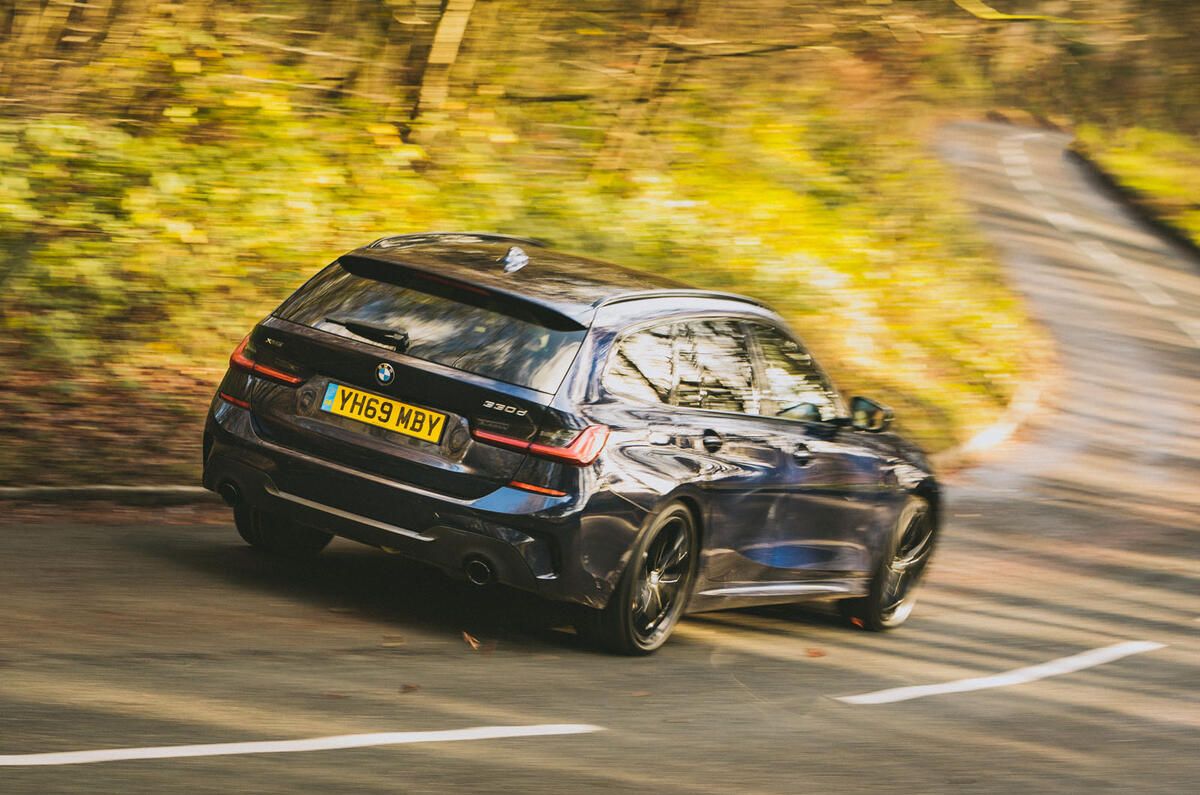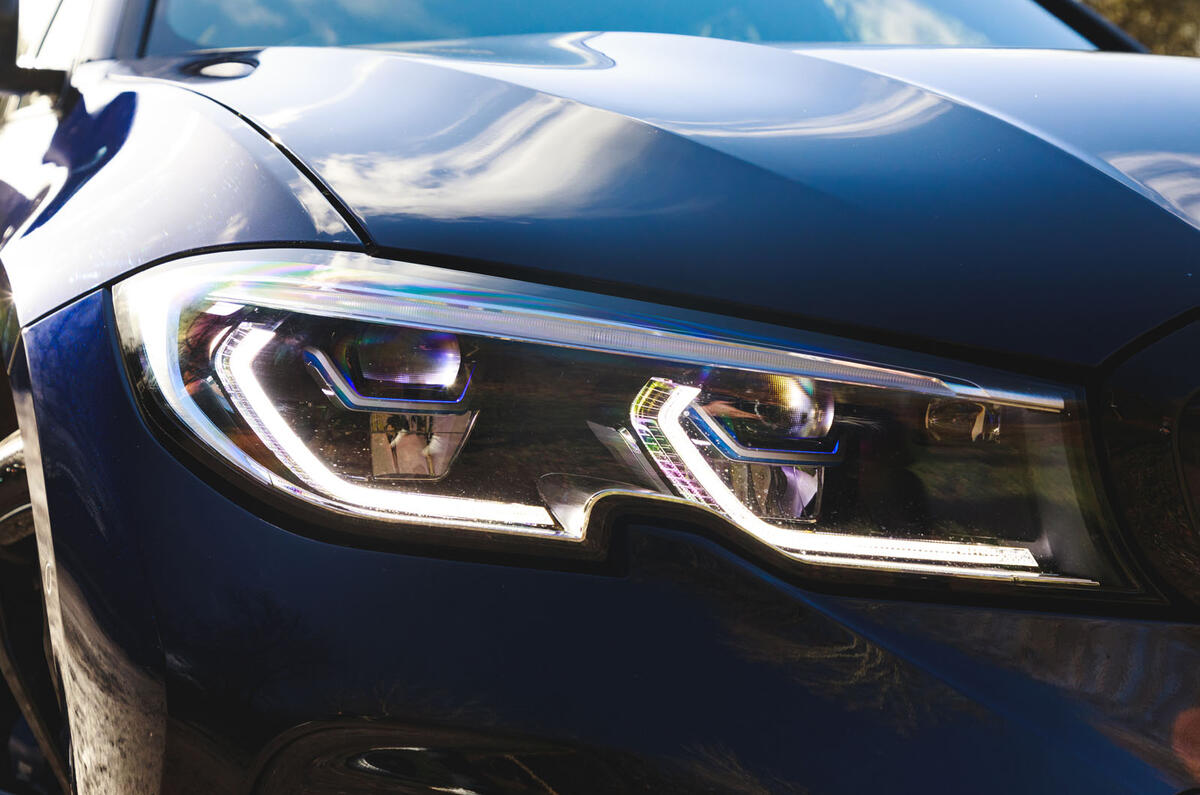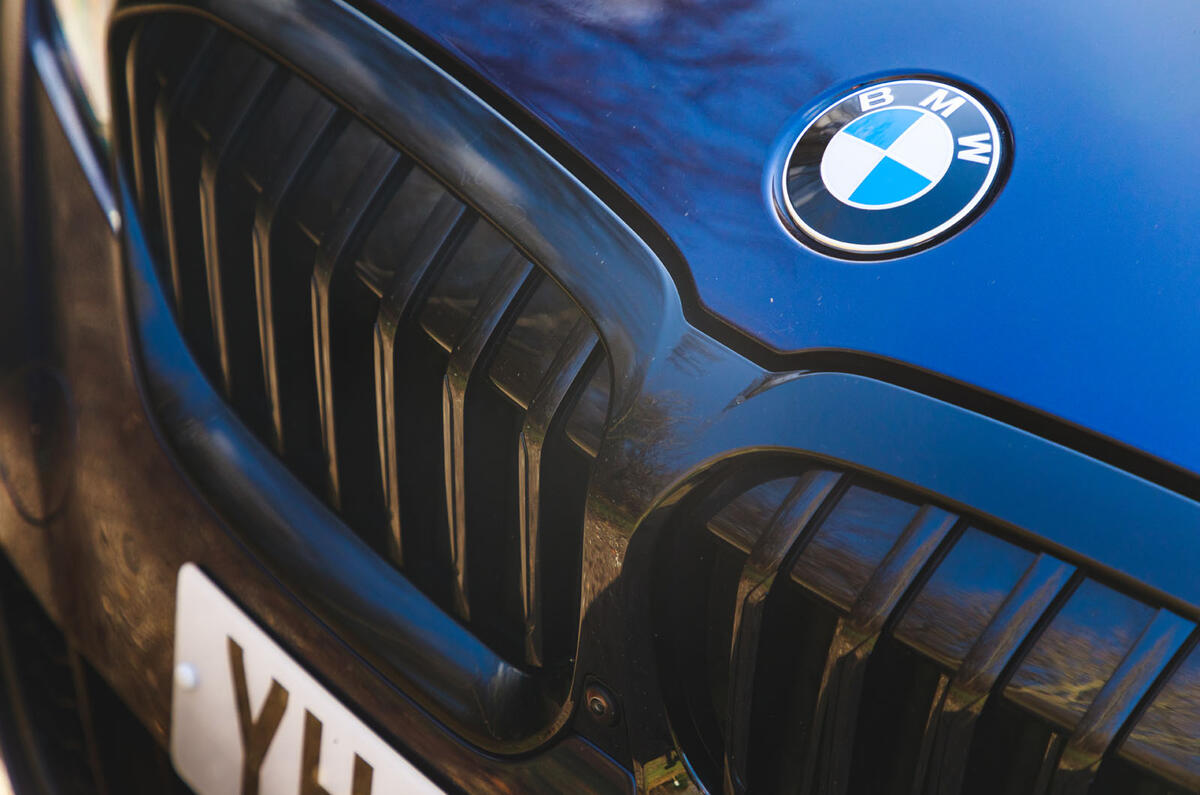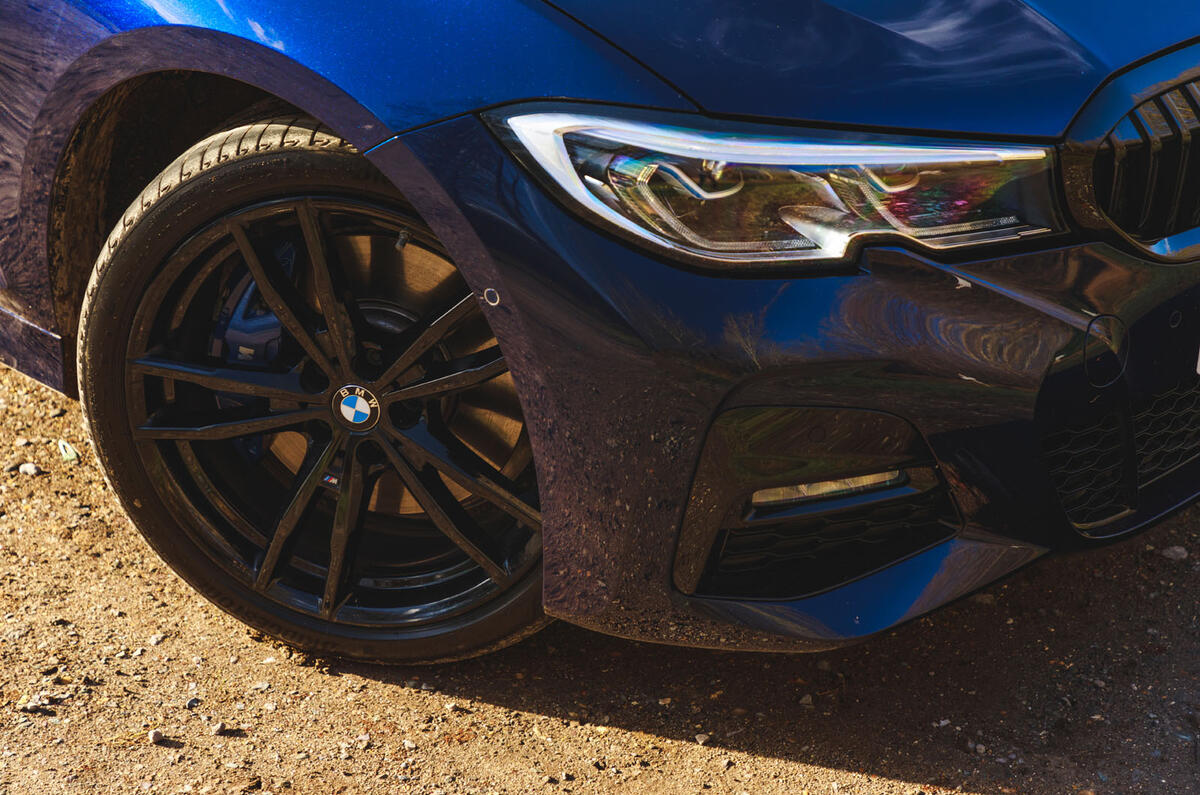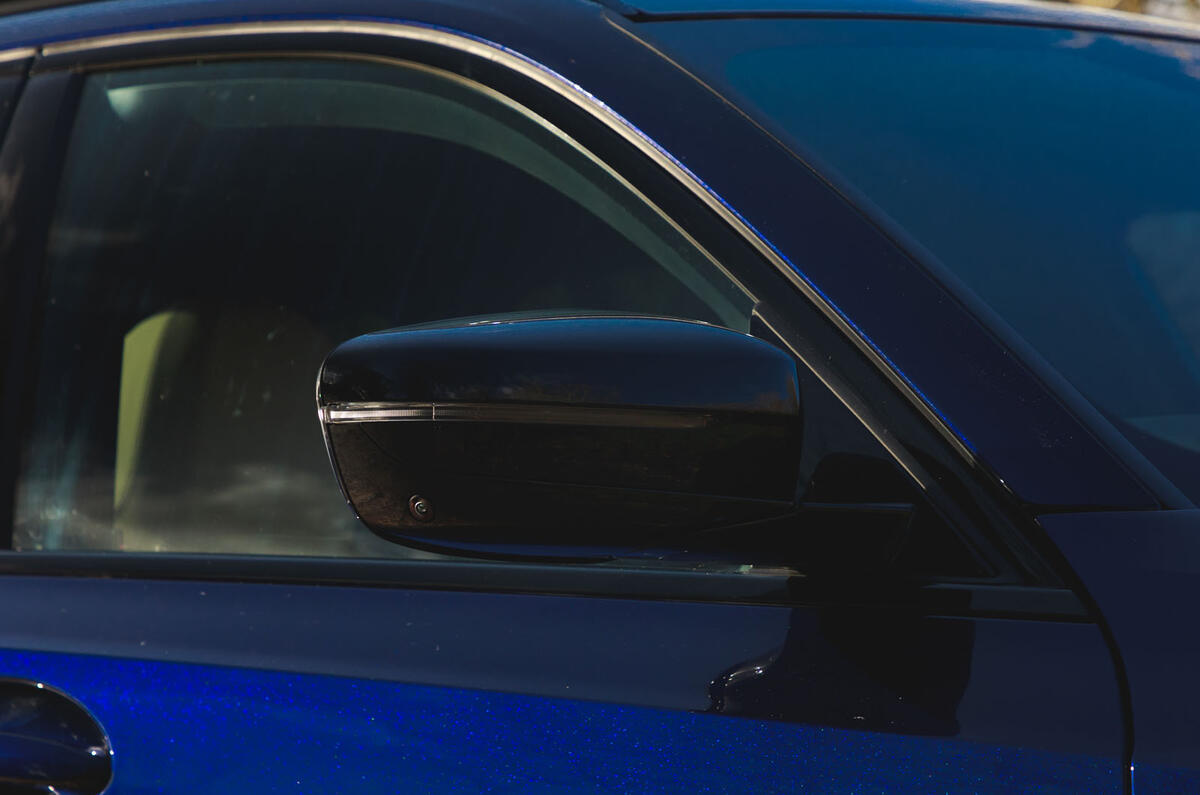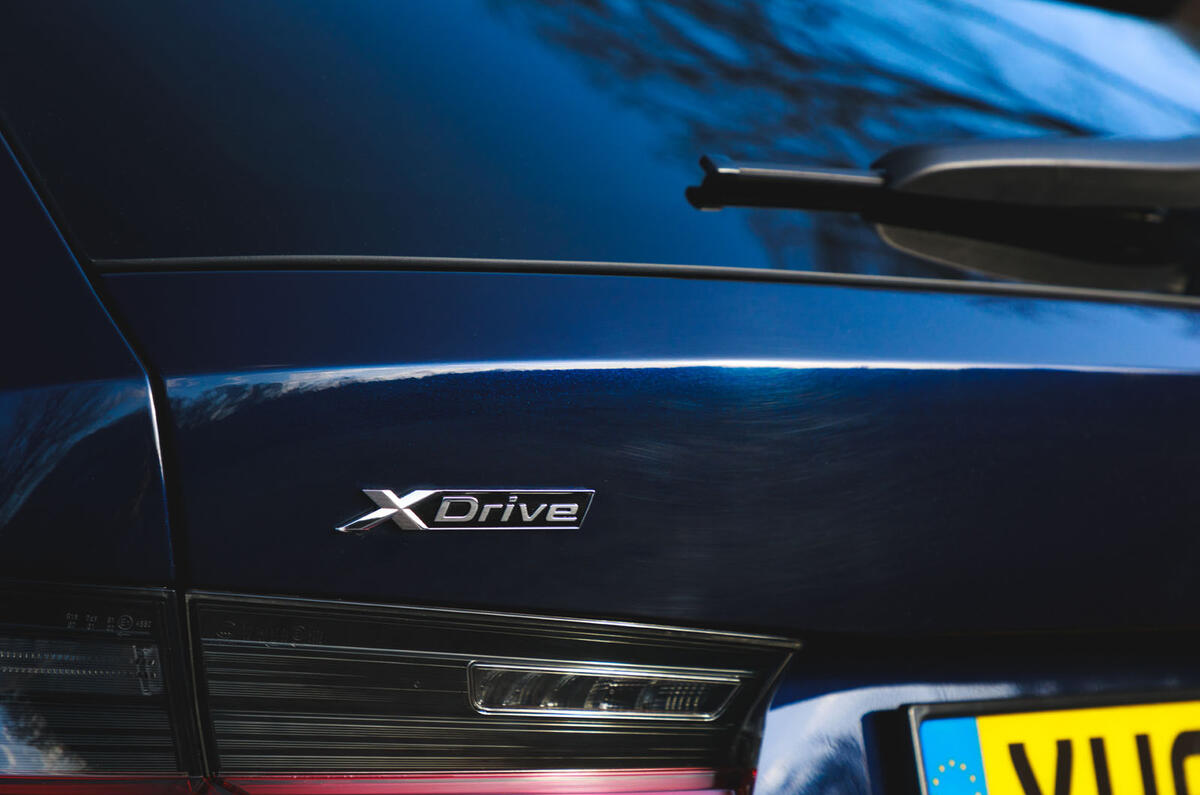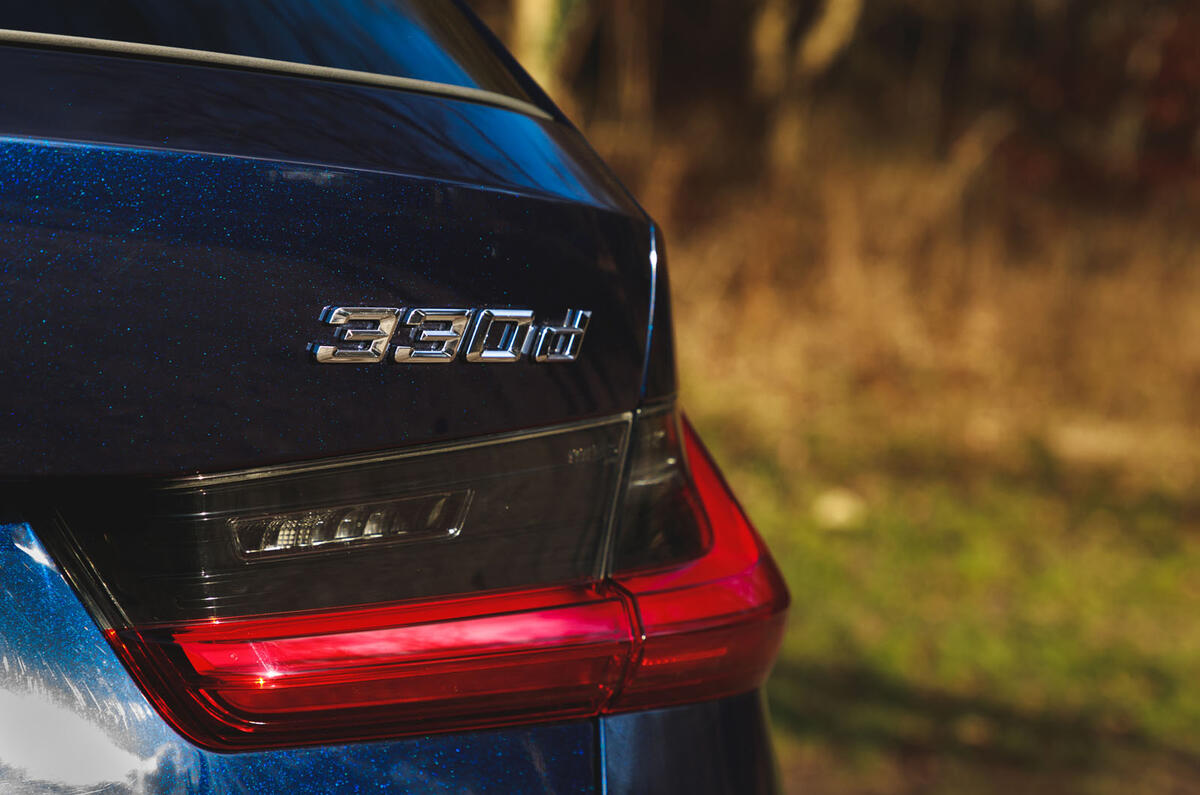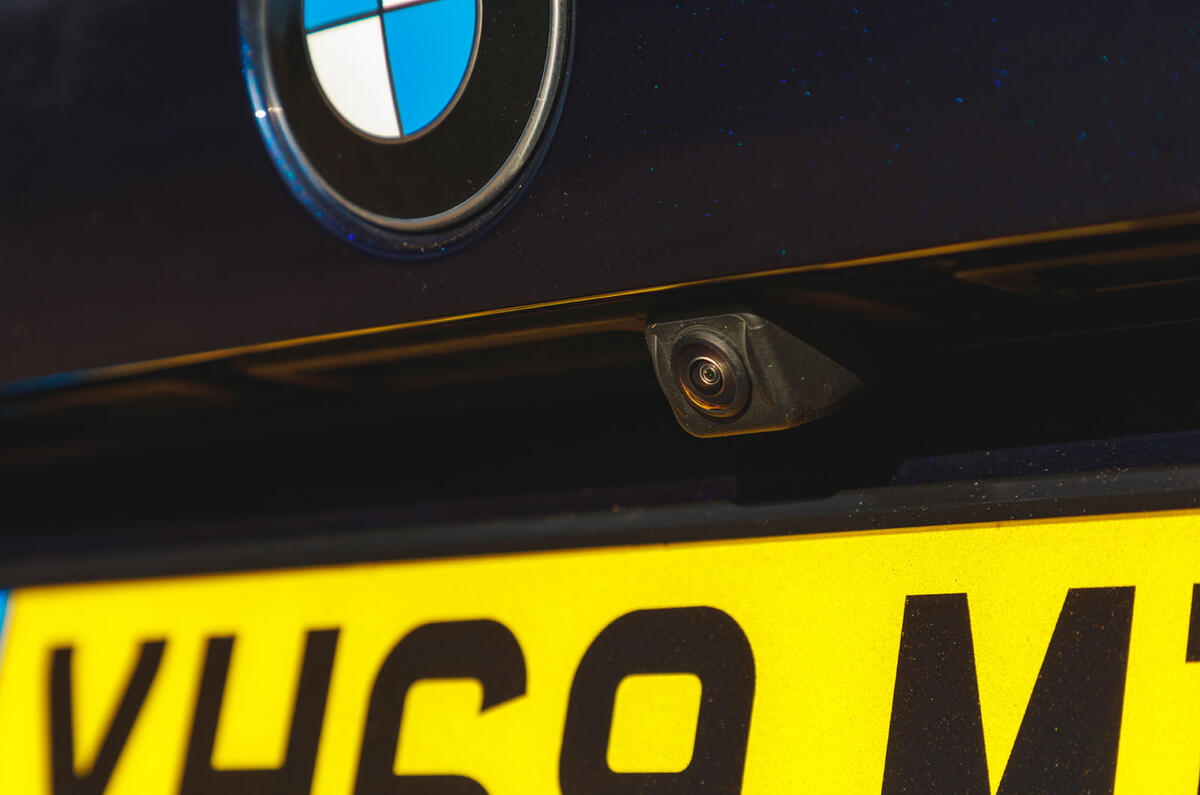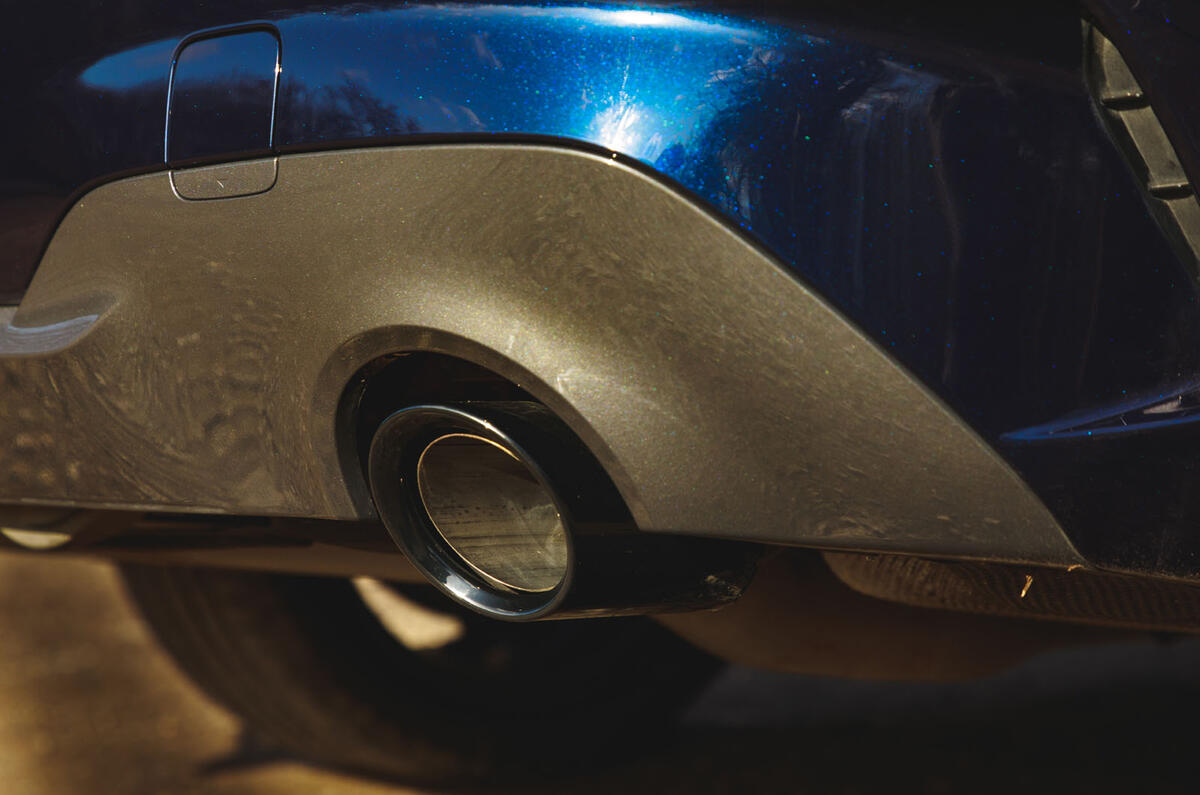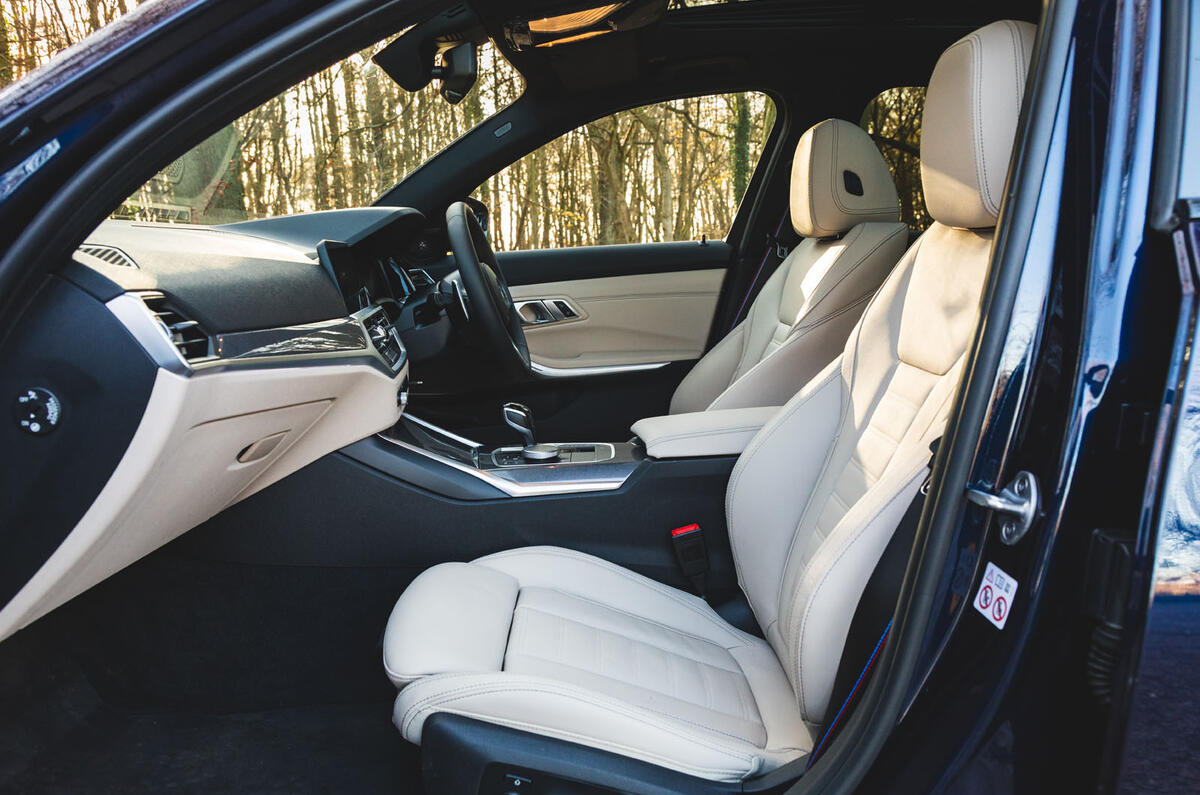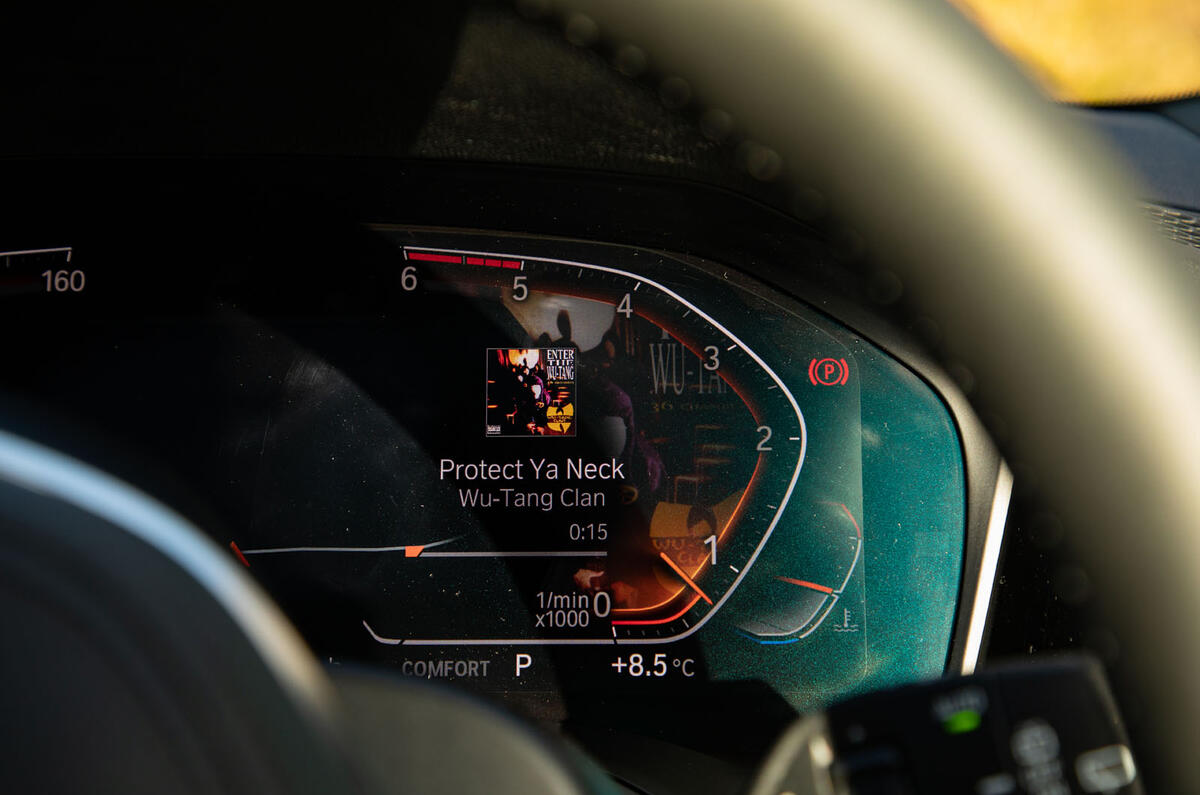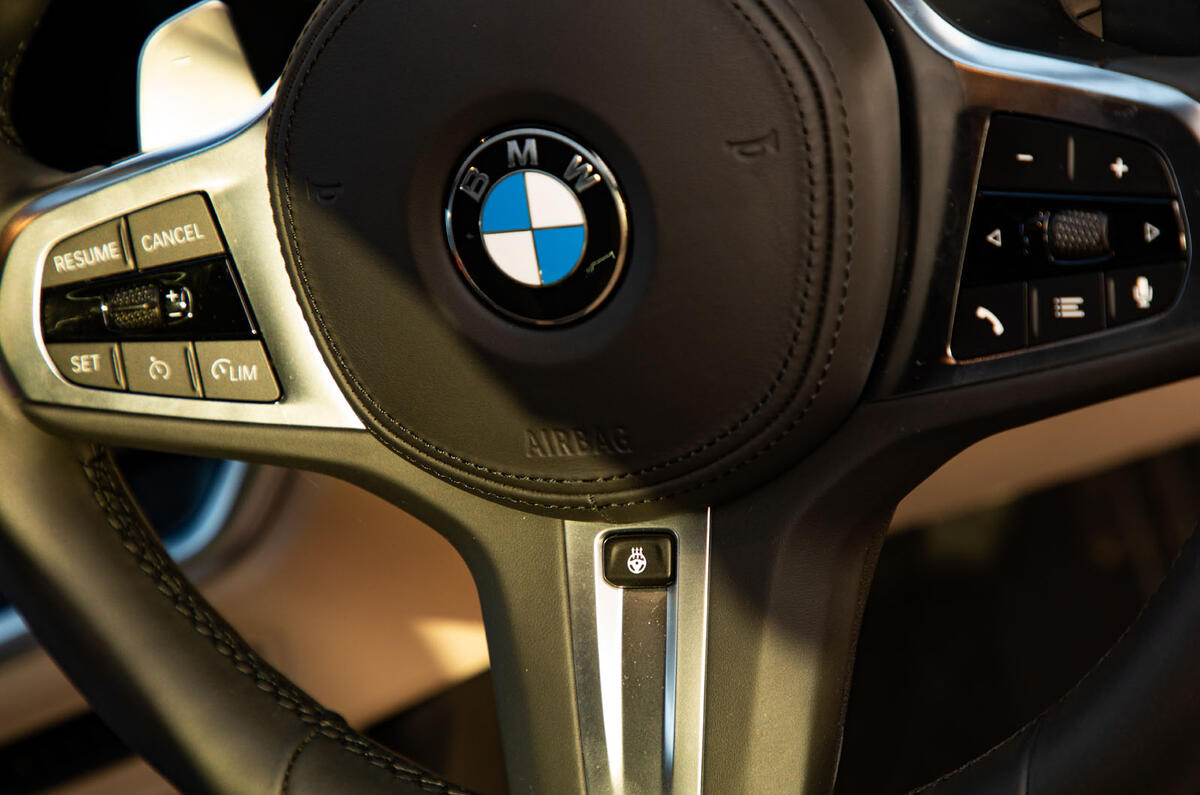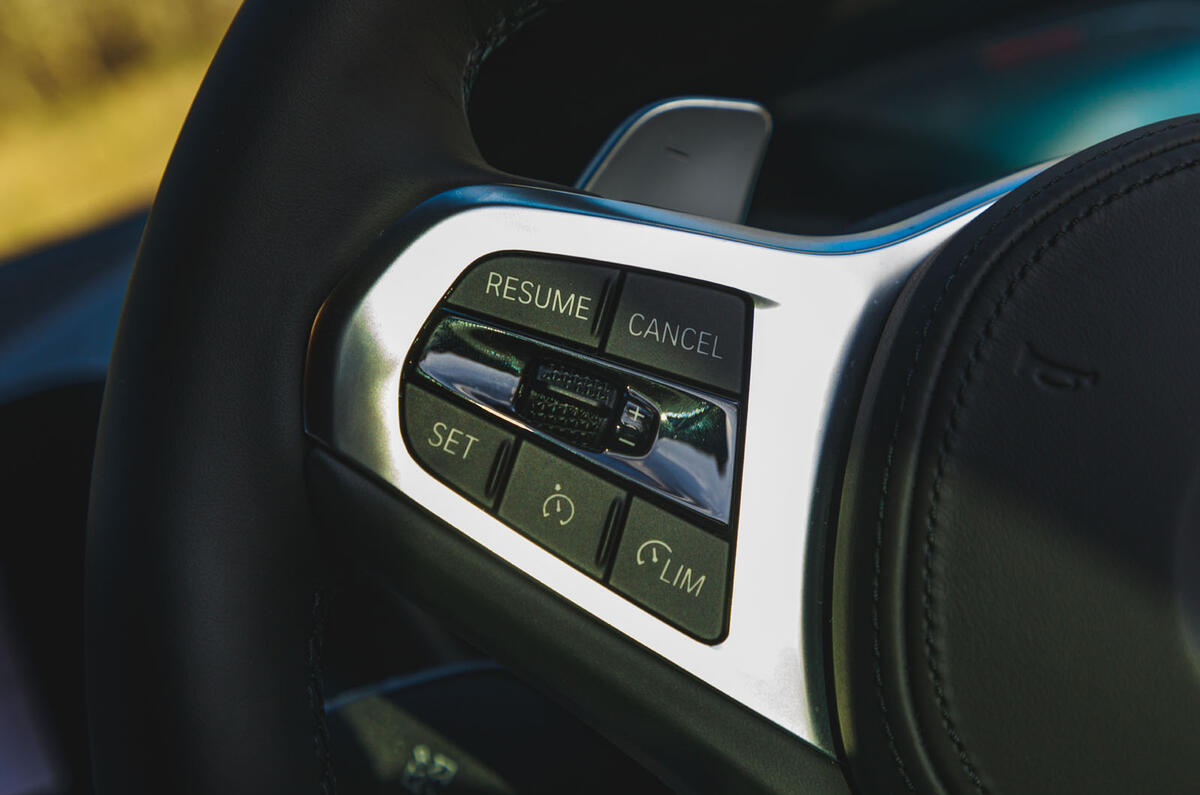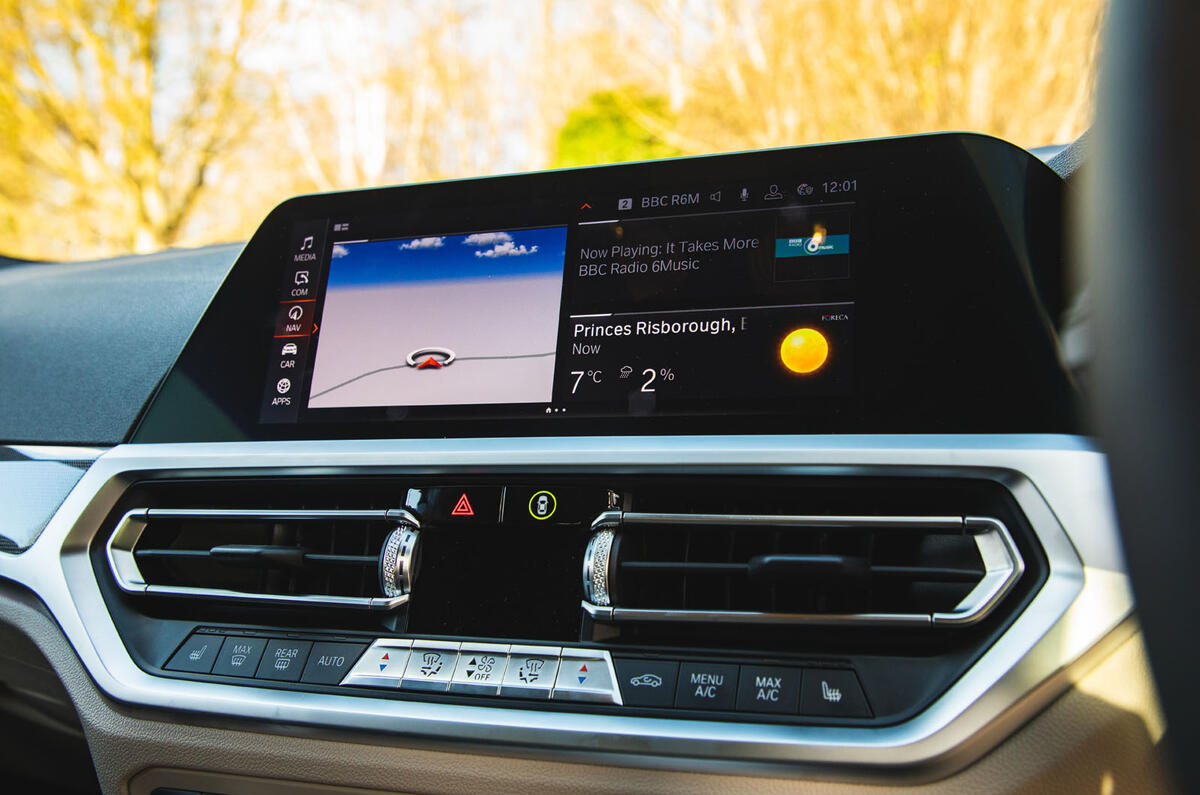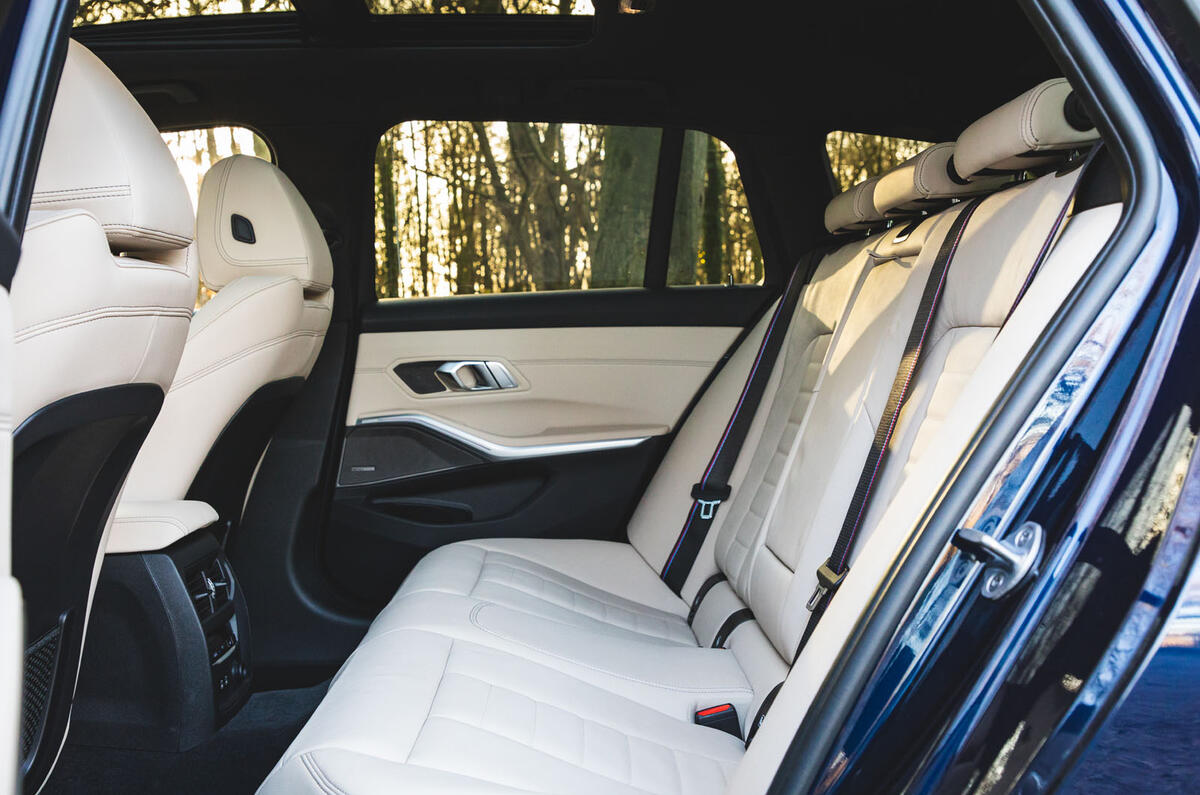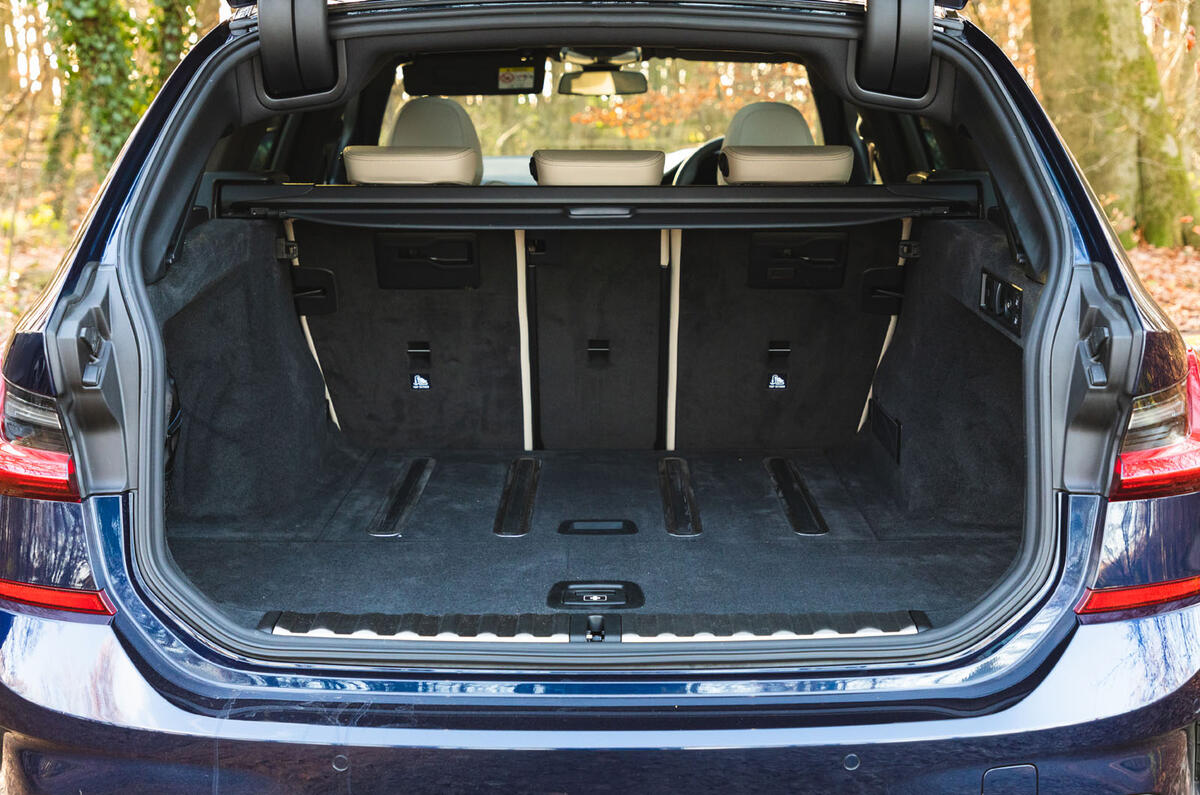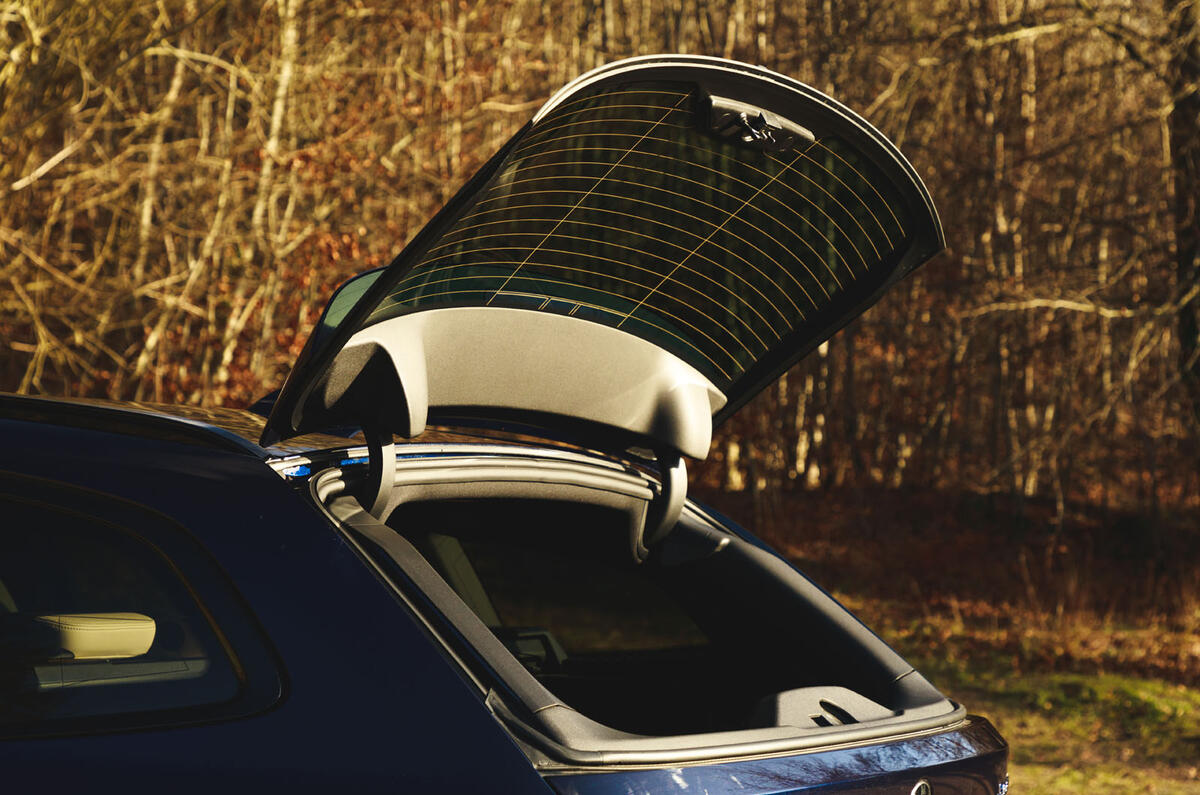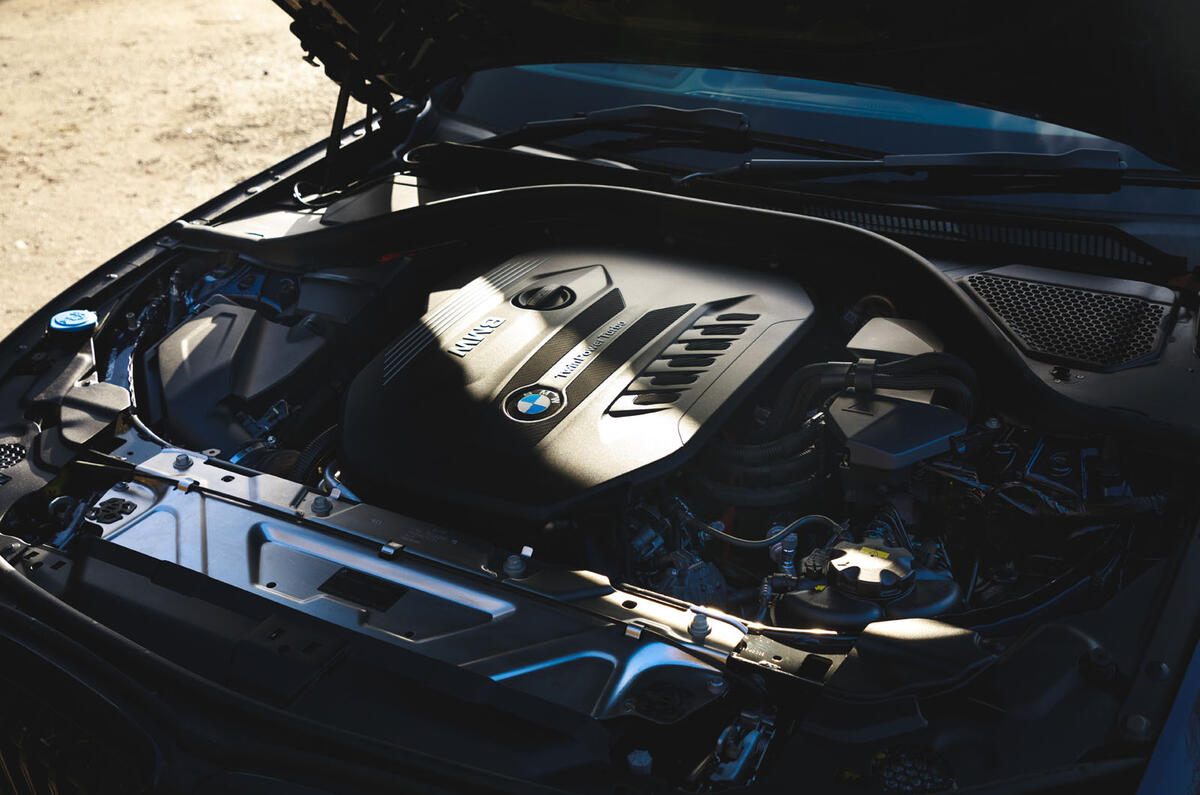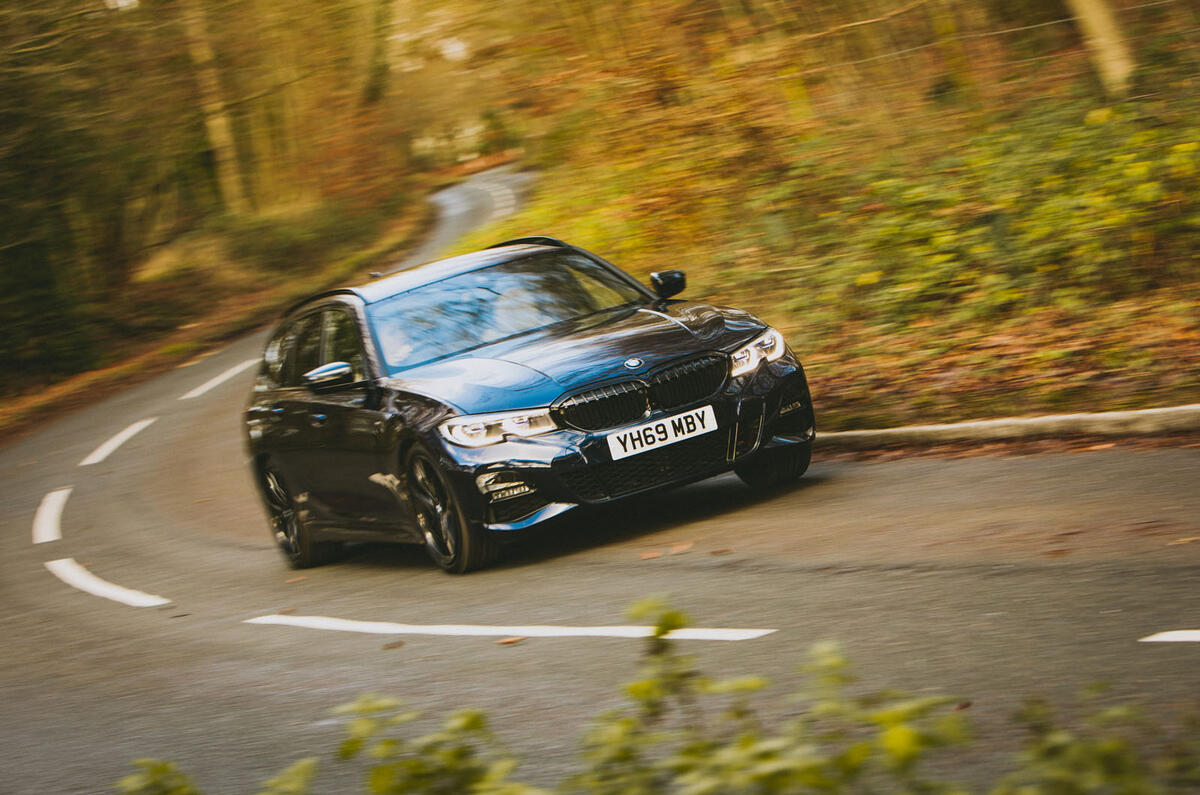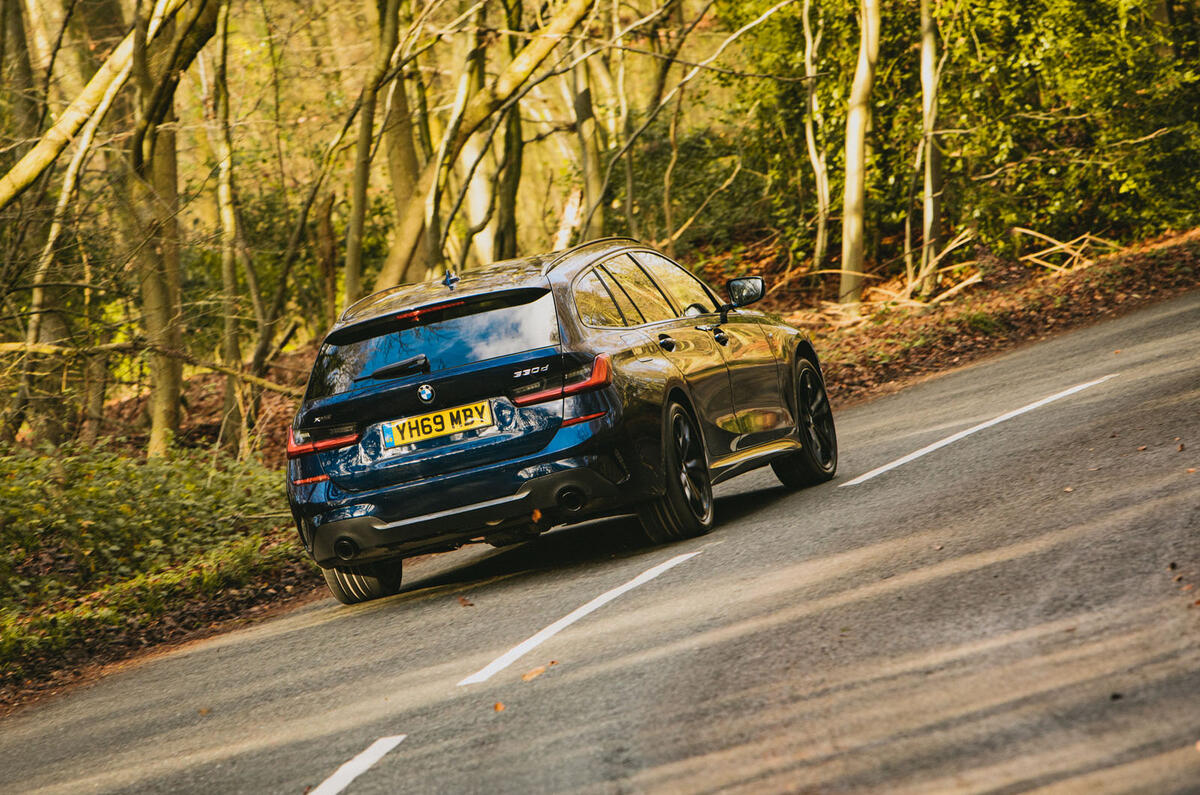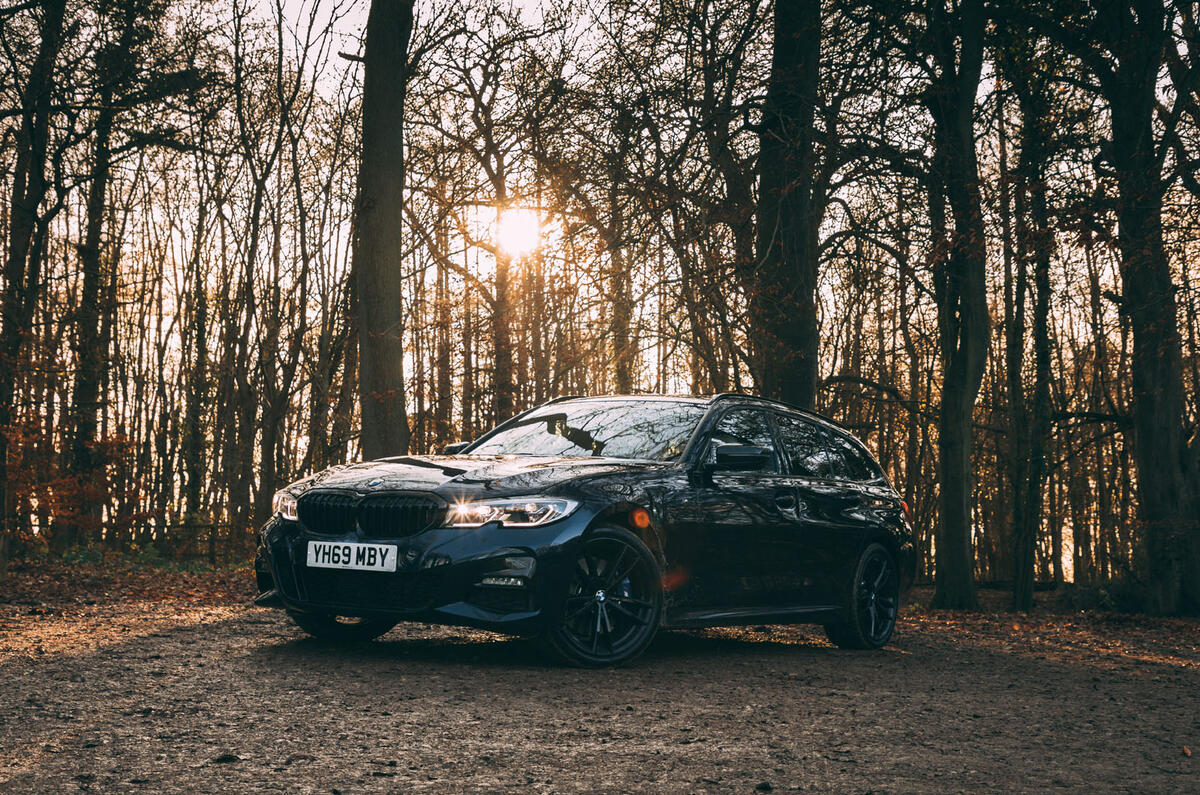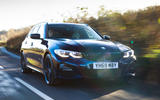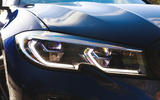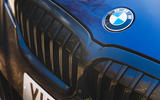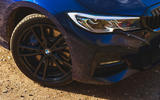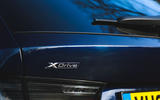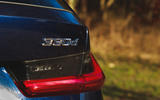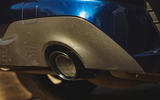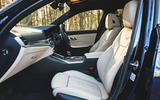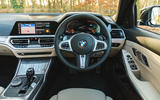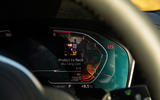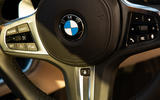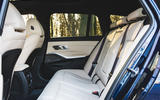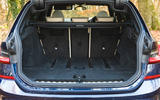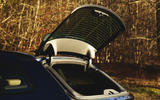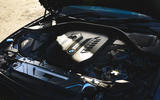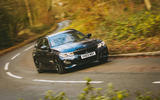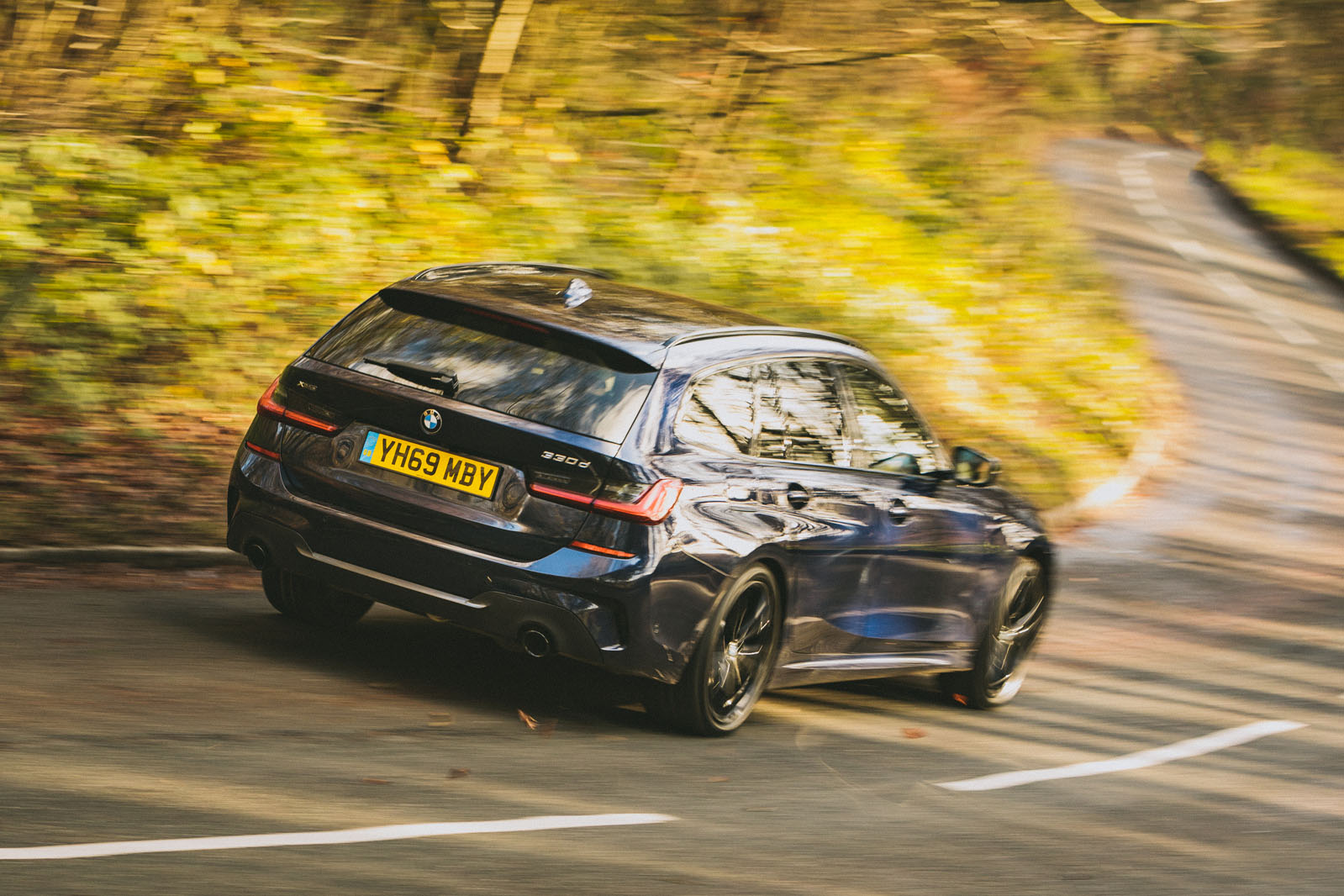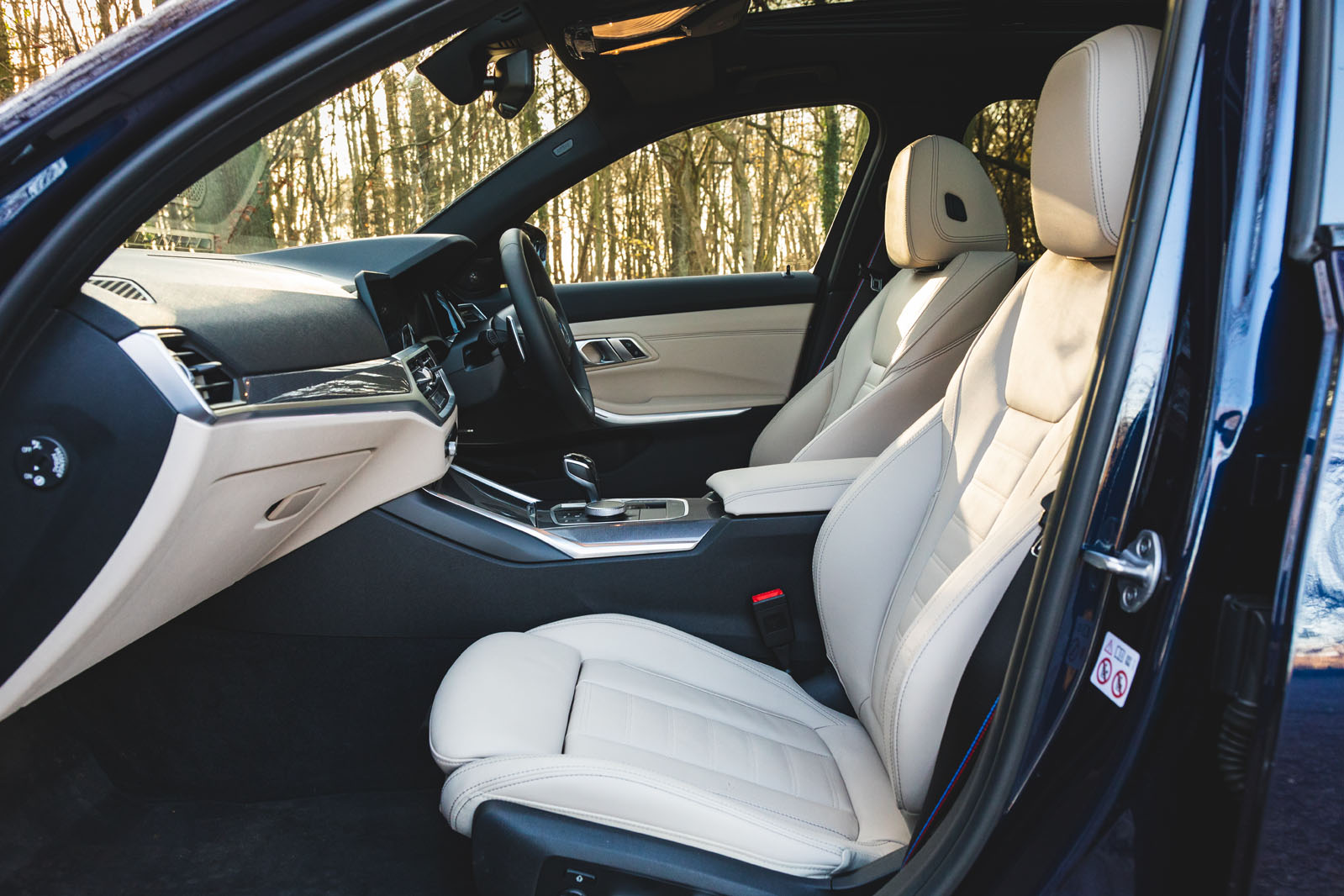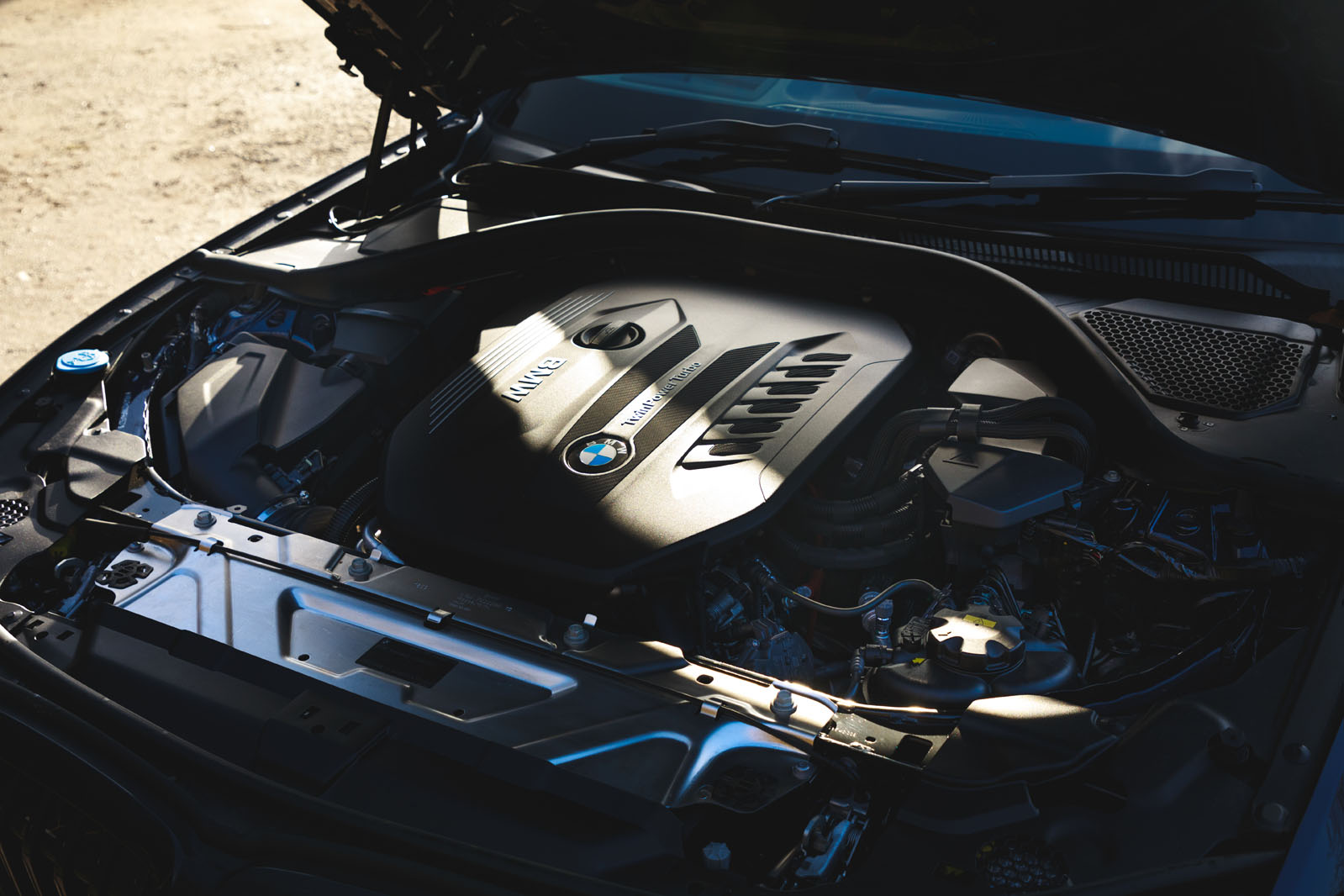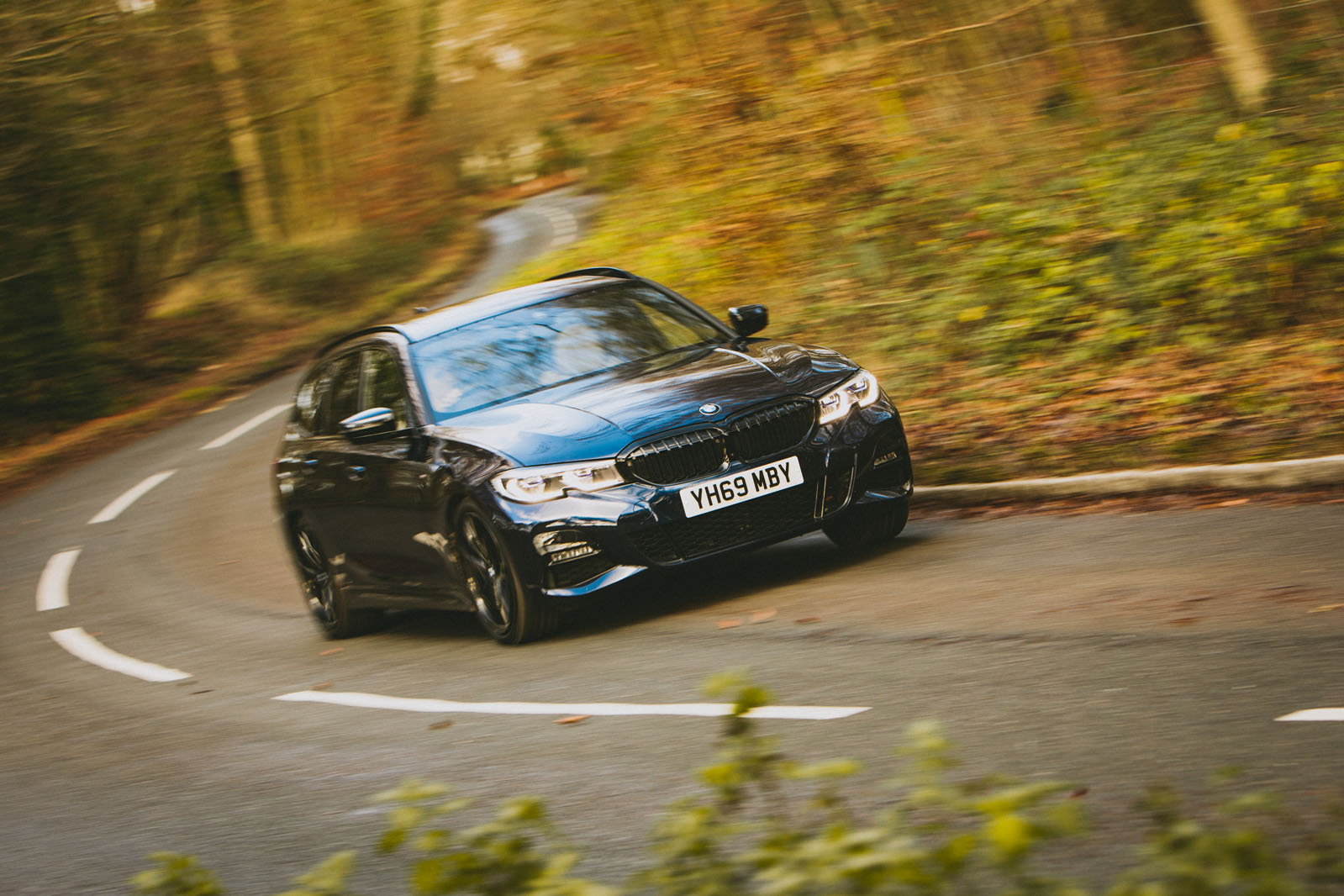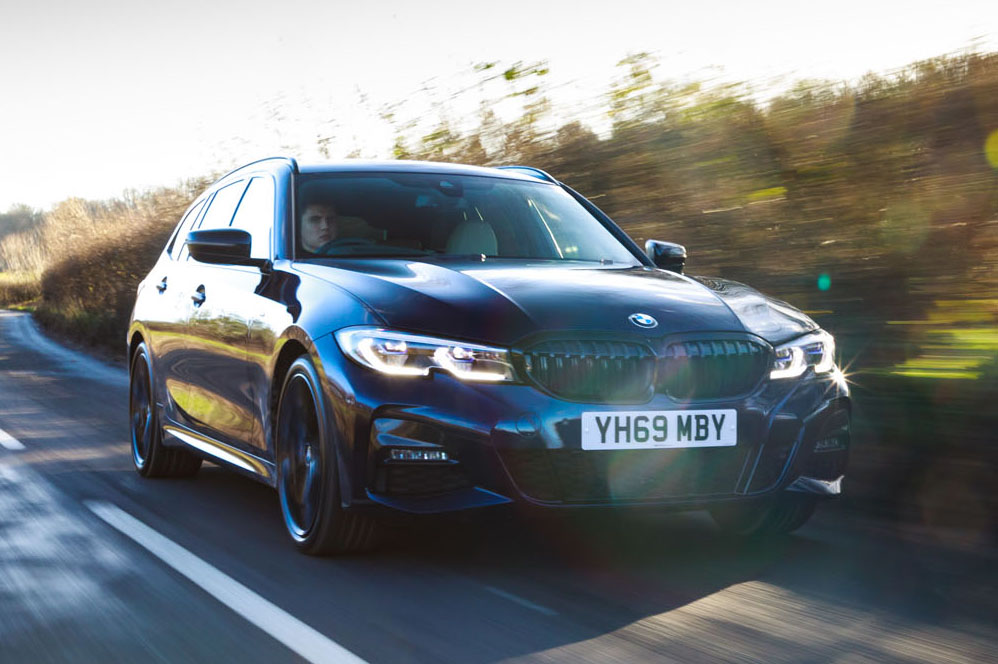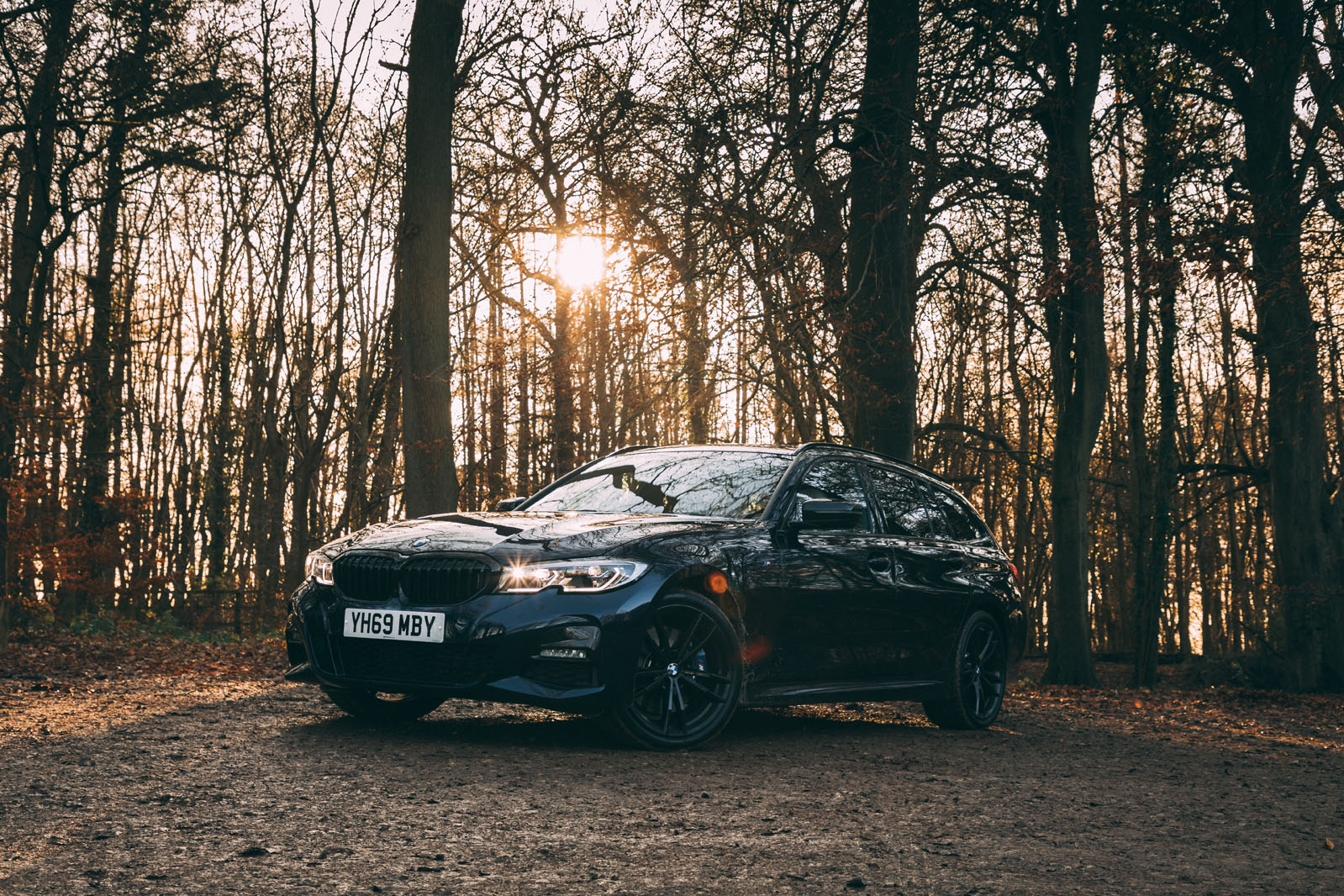Forward of the luggage compartment, the 3 Series Touring’s cabin is identical to that of the BMW 3 Series saloon.
That means you get the same easily identifiable architecture throughout, with its evolution of BMW’s cascading dashboard design and the same impressively high standards of material fit and finish. It’s not the most opulent or ostentatious cabin in the world, but it’s hard not to be taken in by the effortless premium feel. For perceived quality, it blows the cabin of the Alfa Romeo Giulia out of the water, and likewise that of a Jaguar XE – but then so it should, given that prices for top-spec versions of the 330d start north of £45,000.
Still, and in typical BMW fashion, function doesn’t take a back seat to form. The scope for adjustability in both the seating position and steering column is truly excellent, although our test car’s optional £1900 Premium package, which introduces electronic adjustability for the standard-fit sport seats, is a key player in this regard. The sports seats themselves didn’t draw the ire of any of our testers for any perceived lack of comfort or support, while BMW’s commitment to retaining a rotary dial for control of the infotainment system improves ease of use greatly when on the move.
Although it would be stretching the truth somewhat to describe the spaciousness of the 3 Series’ second row as a particular selling point, rear passenger space is nonetheless competitive. With the front seats positioned for a taller driver, those in the back won’t find their knees come into too close proximity to the seatbacks. Head room is good, too, although adults will want to do their best to avoid having to sit in the less accommodating middle chair.
With a seats-up luggage capacity of 500 litres, boot space is strong if not quite class leading. The Volvo V60 outdoes the BMW by 29 litres, but both outgun the Mercedes-Benz C-Class Estate and Audi S4 Avant (460 litres and 420 litres respectively) by an even greater margin. As before, the 3 Series Touring has a particular selling point: the rear window can be opened independently of the tailgate for quick access. With the rear bench collapsed, which can be done with a touch of a button in the boot wall, the cargo hold increases to 1510 litres – larger, even, than that of the Volvo.
BMW 3 Series Touring infotainment and sat nav
BMW’s latest 10.25in Live Cockpit Professional infotainment system comes as standard on M Sport models and above, with the lower-grade Sport cars featuring an 8.8in display. For the sophistication of its graphics and the slick manner in which it operates, this is easily one of the best systems out there.
Standard features include satellite navigation, DAB radio and Bluetooth connectivity. BMW’s Connected Package Plus also includes Apple CarPlay, although strangely we couldn’t get this feature to work on our test car. The optional Technology package introduces an excellent head-up display and wireless smartphone charger, among other features, and is well worth its £1900 asking price.
BMW’s new digital instrument binnacle is clear and easy to read, although none of our testers was a huge fan of the hexagonally shaped dials. A very basic level of configurability was a bit of a let-down, too.


